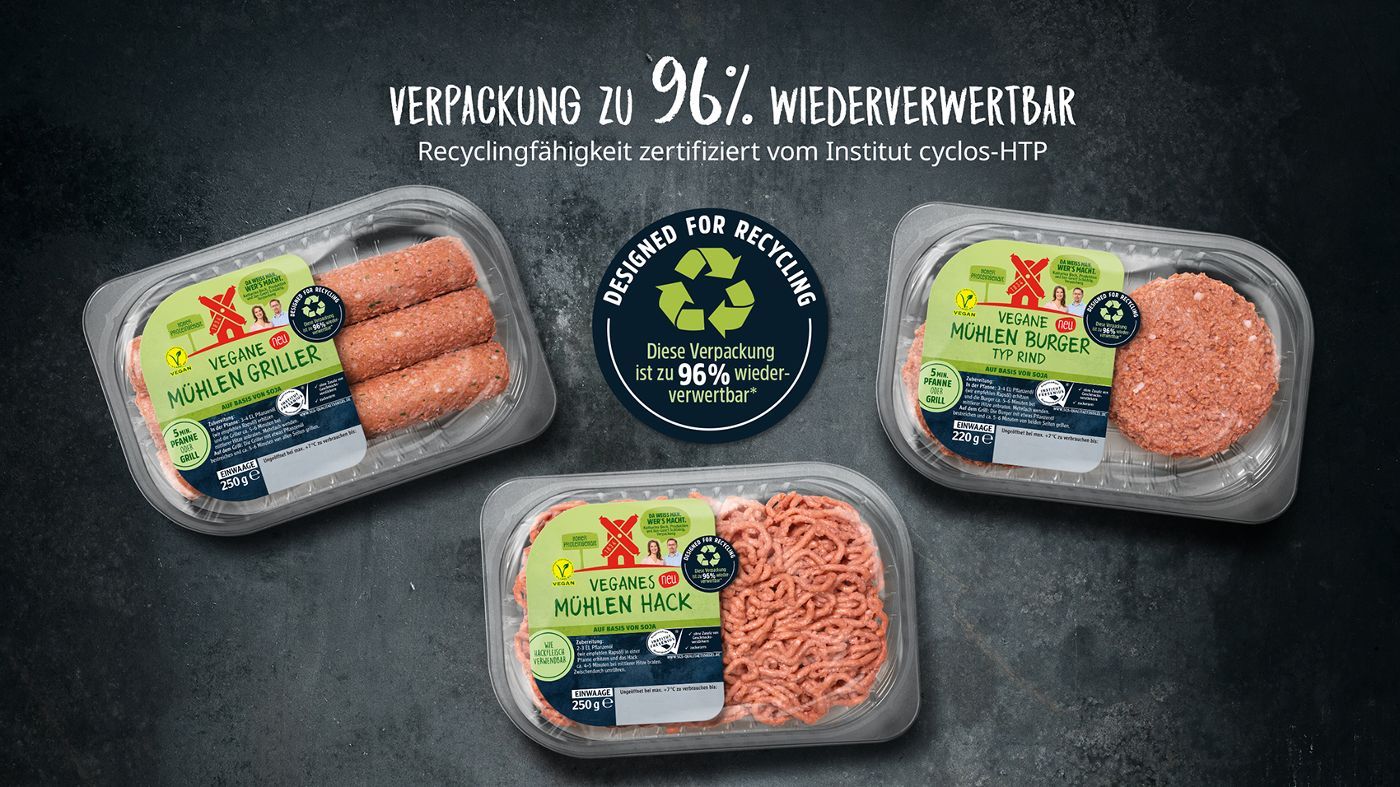Packaging 96% recyclable*.

Image sources: Rügenwalder Mühle
*The packaging shown consists almost exclusively of polypropylene (PP), from which high-quality recycled pellets can be obtained. The label was also changed from paper to PP in order to achieve the purest possible sorting results in the recycling process. All homework on the part of the manufacturer has been done here. In collaboration with independent institutes, adhesives and printing inks were also scrutinized and optimized for recyclability.
Rügenwalder works with “state of the art” packaging. The question remains as to when PP sausage packaging can be turned back into PP sausage packaging. Currently, the use of recyclate is only permitted for R-PET from the single-use stream.
Thus, the plastics from which the packaging of the sensitive sausage products are also made in the future will not be recycled back into sausage packaging. Under the current conditions, Rügenwalder Mühle’s packaging can at best be turned into inferior plastic products. The cycle is not closed and that is the challenge for politicians. The movement in the economy is currently also triggering corresponding discussions in politics in order to pave the way for genuine recycling of PP, PE, and much more. with food contact.
Anyone wishing to have their product packaging tested for recyclability on the basis of the latest framework conditions can contact us. Together with our partner“Recyda“, we will prepare a report for the destination countries of your choice for a fee.
Our conclusion: monomaterial alone is not enough. We need approvals for common recyclates in direct contact with food – and well thought-out design (like MILK. ;)) in order to be able to produce high-quality recyclates .
Best Practice: RÜGENWALDER MÜHLE